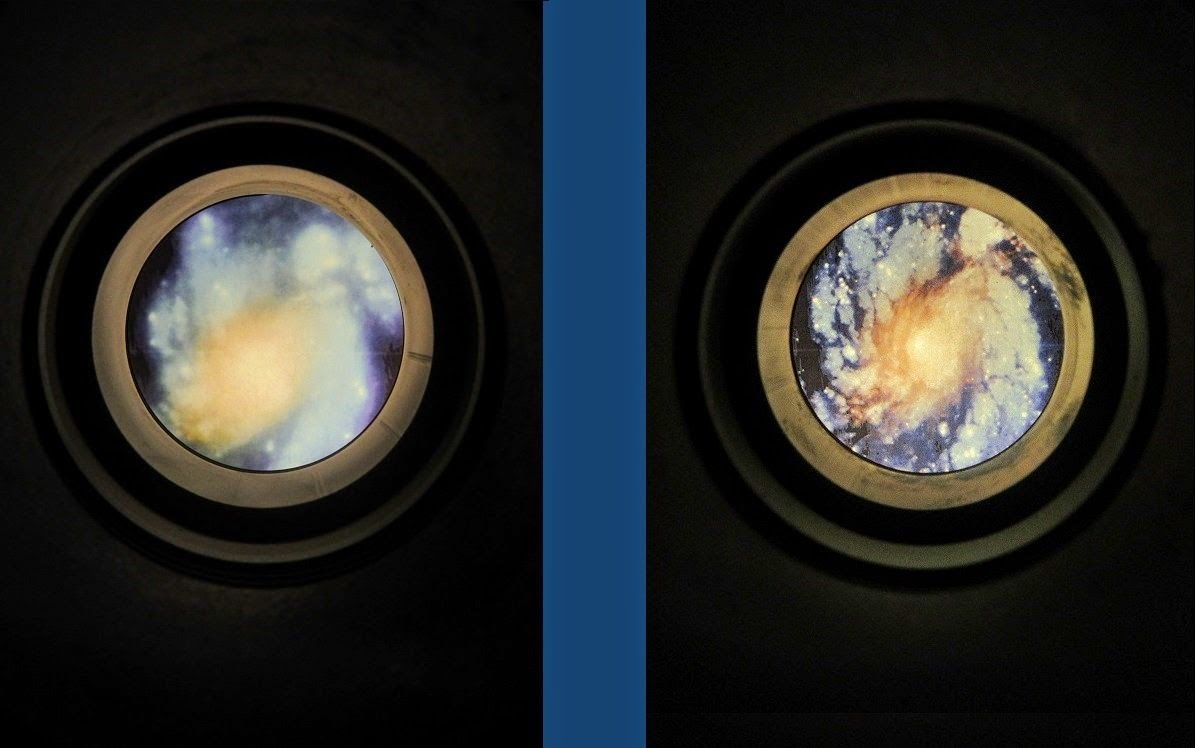Wow, it seems like just yesterday, we were celebrating Hubble's 21st birthday, back when the intrepid eye-in-the-sky was old enough for a beer!
On April 24, 1990, STS-31 Space Shuttle Discovery lifted off on its mission to deploy the Hubble Space Telescope (HST) into orbit. This amazing astronomical observatory, a joint NASA-ESA project, has now been orbiting above Earth's atmosphere and observing celestial bodies for more than two solid decades!
Full-size Hubble Space Telescope mockup in the Smithsonian
(The "Structural Dynamic Test Vehicle")
(The "Structural Dynamic Test Vehicle")
Named after astronomer Edwin P. Hubble (1889-1953), the HST is capable of taking extremely sharp images in ultraviolet, visible and near-infrared wavelengths, and many of its captures have led to incredible astrophysical breakthroughs, not the least of which is accurately determining the rate of expansion of the universe. In our own neighborhood, HST taught us a great deal about TNOs, dwarf planets and KBOs; and the very farthest objects seen, in Hubble Ultra Deep Field, or HUDF, are galaxies 13 billion light years away!!
To date, Hubble has observed more than a million celestial targets and amassed more than 100 terabytes of data in multiple archives!
Not too shabby for a telescope with a rather... inauspiciously blurry beginning!
Click to embiggen
Plaque reads: "Inside Hubble is one large, round, curved mirror and other smaller mirrors that focus light into cameras and other scientific equipment. When Hubble was launched and scientists first turned it on, they had a problem: the pictures were blurry! It's large, round mirror accidentally had the wrong curved shape, so the telescope couldn't focus. Luckily, the problem could be fixed by adding more small mirrors to the telescope, and in 1993, a crew of astronauts flew up and carefully slid them into place. It was like putting on a pair of eyeglasses. Suddenly, Hubble could see stars, galaxies, and gas clouds much fainter and farther than anyone had ever seen before."
Before and After
Click to embiggen again
Click to embiggen again
In May 2009, the fifth and final service mission, STS-125 Atlantis, captured Hubble to replace gyroscopes, computers, and scientific instruments over a whopping 37 hours of space walks! With that marathon upgrade, they made the telescope 100 times more powerful than when it launched. Human hands (or rather spacesuit gloves) won't touch it again, but hopefully it will last at least another decade.







